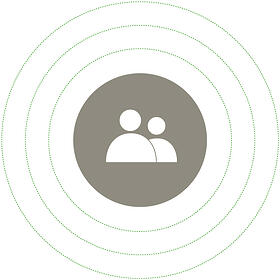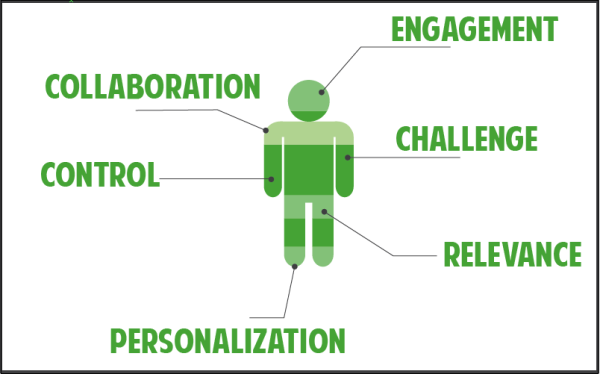 Several studies revealed, time and again, that a student-centered approach to learning is far more superior than any other methods of instruction. This booklet published by the Cambridge University Press, for instance, found that such approach helps students cultivate a “can do” attitude. It allows for autonomous, active learning. Autonomy, positive psychologist notes, is key to motivation. It’s what makes people wake up in the morning and do the work they love.
Several studies revealed, time and again, that a student-centered approach to learning is far more superior than any other methods of instruction. This booklet published by the Cambridge University Press, for instance, found that such approach helps students cultivate a “can do” attitude. It allows for autonomous, active learning. Autonomy, positive psychologist notes, is key to motivation. It’s what makes people wake up in the morning and do the work they love.
The learner, after all, has his/her own unique situation, personality or set of experiences. These personal factors significantly influence how learners retain information, interact with fellow learners, solve problems and apply knowledge. Taking a teacher-centered or a content-centered approach while ignoring students is a surefire recipe for failure. Obviously, information is important and critical to learning. But information is only part of the formula. eLearning courses need to understand learners.
Here's how to make your courses more learner-centered and more learner-driven:

1) Challenge
Challenges, without a doubt, stimulate the brain. They force the learner to think about their previous knowledge, process the new information, reflect, and then make a decision. Learners who face appropiately challenging decisions require them to apply knowledge, not just recall it.
As an eLearning developer your main goal is to engage learners and challenge their understanding at all times. To include this element, focus on the question: “What challenges will students face along the way, and what can they do after completing the course?”
2) Engagement
Forget clicking! Engagement goes beyond clicking a mouse. Genuine engagement happens inside the brain. It’s called thinking. You can easily encourage students to think by adding moments of thoughtful reflection in your program. Make them pause for a while and ask them how the content they have just consumed relates to their work. The content has to reach them intellectually and emotionally as well. Only this kind of deep and meaningful engagement allows for lasting change to happen.
There are many ways to engage students. You can drop them into real or imaginary situations where they have to decide using your material. Use case-based learning and scenarios that get the learner to analyze information and put it within a frame of reference. The skill of making sound and reasonable decisions is definitely an outcome of a learner-centric approach.
3) Personalization
A learner-centered approach, first and foremost, is personal. It takes into account the real situation of your student, not everyone’s ideal student. You may find that learners doing your course prefer reading to listening. Or you may discover that majority of learners who complete your program appreciate on-time feedback through emails.
Students have different learning styles and come from diverse backgrounds. It only makes sense to make your material suitable or fit for their needs than ask them to adapt to your course. Such adaptability has to be part of the design. Package your content in multiple formats for people to learn from – videos, graphs, charts, quizzes, activities and so on. This will help you to reach each type of learner. Get to know your learners before creating the course. Ask them questions about their educational background, interest and goals.
4) Control
All of the elements mentioned earlier won’t work if you don’t give students a sense of control and responsibility. You need to empower learners. Learners who can control their own pace and pick what they want to learn are much more effective than learners who passively receive instructions from the teacher. Trust that your students will spend more time on chapters or sections they have not yet mastered.
5) Collaboration
Learning isn’t a solitary activity. Learning is a symbiotic relationship. We learn in a group inside a classroom, with a partner, or from an author. Let students collaborate with each other by giving them opportunities to actively seek and share information, construct meaningful insights, produce a diverse set of ideas and appreciate multiple perspectives. Encourage dialogue and social interaction so that they can take ownership in the learning process. By introducing the element of collaboration you are at the same time encouraging students to learn more from each other.
6) Relevance
Relevance has a lot to be with student-material connection. Every course should address a learner’s current needs or learning gaps. Will your course resonate among students? Will they find it both useful and meaningful? Make sure they answer yes to these questions before you hit publish. Otherwise, ask them for feedback and modify your course to accommodate their needs. It is the goal of learner-centred eLearning courses to bridge the gap between what is learned and the real world.
Final Takeaway:
The core of eLearning design is centered on the interest of the learner. Learners should be active participants, they should be able to learn at their own pace and use their own learning techniques. As well, learning needs to be more personalized than standardized. But most importantly, problem-solving, critical thinking and reflective thinking are at the core of the learning process.




